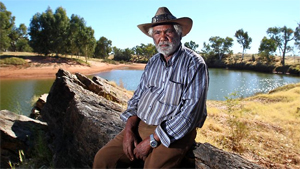The cattle station is set to become one of the world’s largest carbon farms, drawing pollution from the atmosphere by selling offsets to companies that pollute.
Launching the initiative on the deep red banks of the Finke River yesterday, Environment Minister Tony Burke admitted there were no precedents for the Henbury project. The federal government kicked in $9.1m of the cattle station’s $13m purchase price.
“This is the big canvas to provide a big example of allowing a market-based approach to drive biodiversity outcomes,” Mr Burke said.
The conservation effort will begin with the removal of 17,000 cattle by year’s end, and thus significant emissions of methane gas. The project managers will then orchestrate a campaign to weed out introduced plants that have choked the propagation of native, carbon-storing species.
New efforts will be made to cull the population of feral camels.
Finally the company will manage fires on the property.
CSIRO site leader Ashley Sparrow conceded the rejuvenation would be “a slow process, since most recovery relies on big rainfall events”.
“I would expect in a while, and after some good rains, you’d see fields full of daisies in winter and high grass in the summer,” he said.
Despite positive discussions between new owners R.M. Williams Agricultural Holdings and traditional owners, some in the Aboriginal community have bitterly refused to support the project.
Bruce Breaden, a former director of the Central Land Council, welcomed the new opportunities but regretted the Aboriginal people were unable to buy it themselves.
“I’m not cranky about it. I hope it will work,” he said.
But Barry Abbott, who heckled Mr Burke during his news conference yesterday, accused R.M. Williams and the government of not consulting with Aboriginal people.
“Why couldn’t we have the money to buy it for the Aboriginal people?” the 67-year-old asked Mr Burke, who sat with the man to hear his concerns.
“Can’t they give us a block of land each to run animals for killing? What are we going to eat? Lizards?”
Mr Burke said there were “two views within the local community and you’ve just heard one of them”.
Managing director David Pearse said RMWAH would work with biodiversity and carbon experts to establish a “scientific methodology” to measure emissions sequestration.
